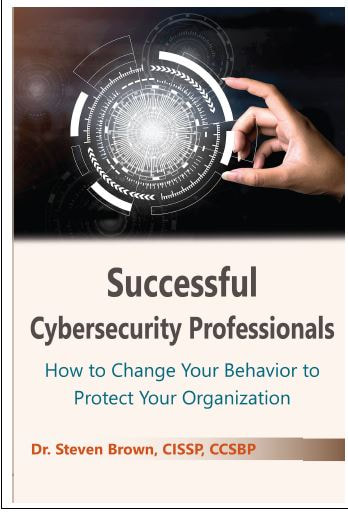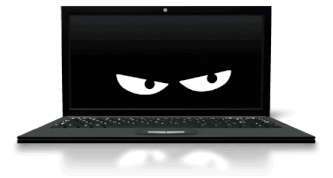
From my latest book: on the need to understand cybersecurity, but from our own perspective, not the end-user.
Successful Cybersecurity Professionals: How to Change Your Behavior to Protect Your Organization
What does the New York Statue of Liberty, the famous Brooklyn Bridge,
and the iconic Madison Square Garden, where many famous musical
bands have played and world champion sporting events have been held,
have in common? Well, they’ve been sold multiple times, to different people,
for large amounts of money, and all of it fraudulent. At one point in
the mid-1900s, rumor has it that it had gotten so bad that the Brooklyn
Bridge was being sold twice a week. So, the New York City Police Department
had to place a booth on the bridge to tell the new weekly owners,
that the bridge was not sold, and they have been scammed. So, what is
this about? Well, behavior. Why we do things, how do we behave, why in
the normal course of a day we would never fall for a scam or be persuaded
to do something against our better judgment, but in the next instance,
we would buy a bridge.
This book looks at behavior from a cybersecurity expert’s point of
view. And while the cybersecurity expert may not buy a bridge, they may
buy a firewall or implement some security solution simply because of
persuasion. Due to cognitive complexities, biases, heuristics, and everything
else in our environment, we will see how people, even cybersecurity experts, will say they will act one way, but act completely different in a different situation. We will also see, even against their own better judgment, they will change their mind. They will actively work to reach a faulty decision, even knowing that decision is wrong. That is the purpose of this book—to look at and examine our behavior so we make better cybersecurity decisions.
Chapter 1 Cybersecurity and Behavior
Chapter 2 Behaviorism
Chapter 3 Traits
Chapter 4 Perceptions
Chapter 5 So, How Do We Even Think?
Chapter 6 Memory
Chapter 7 How Are We Motivated
Chapter 8 Social Influence
Chapter 9 Stereotypes
Chapter 10 Fight or Flight
Chapter 11 Language
Chapter 12 Differences in Opinion
Chapter 13 Cyber Maturity and Ethics
Chapter 14 Theory of Cybersecurity
Chapter 15 Future
https://www.businessexpertpress.com/books/successful-cybersecurity-professionals-how-to-change-your-behavior-to-protect-your-organization/
https://www.amazon.com/Successful-Cybersecurity-Professionals-Behavior-Organization/dp/1952538424
Successful Cybersecurity Professionals: How to Change Your Behavior to Protect Your Organization
What does the New York Statue of Liberty, the famous Brooklyn Bridge,
and the iconic Madison Square Garden, where many famous musical
bands have played and world champion sporting events have been held,
have in common? Well, they’ve been sold multiple times, to different people,
for large amounts of money, and all of it fraudulent. At one point in
the mid-1900s, rumor has it that it had gotten so bad that the Brooklyn
Bridge was being sold twice a week. So, the New York City Police Department
had to place a booth on the bridge to tell the new weekly owners,
that the bridge was not sold, and they have been scammed. So, what is
this about? Well, behavior. Why we do things, how do we behave, why in
the normal course of a day we would never fall for a scam or be persuaded
to do something against our better judgment, but in the next instance,
we would buy a bridge.
This book looks at behavior from a cybersecurity expert’s point of
view. And while the cybersecurity expert may not buy a bridge, they may
buy a firewall or implement some security solution simply because of
persuasion. Due to cognitive complexities, biases, heuristics, and everything
else in our environment, we will see how people, even cybersecurity experts, will say they will act one way, but act completely different in a different situation. We will also see, even against their own better judgment, they will change their mind. They will actively work to reach a faulty decision, even knowing that decision is wrong. That is the purpose of this book—to look at and examine our behavior so we make better cybersecurity decisions.
Chapter 1 Cybersecurity and Behavior
Chapter 2 Behaviorism
Chapter 3 Traits
Chapter 4 Perceptions
Chapter 5 So, How Do We Even Think?
Chapter 6 Memory
Chapter 7 How Are We Motivated
Chapter 8 Social Influence
Chapter 9 Stereotypes
Chapter 10 Fight or Flight
Chapter 11 Language
Chapter 12 Differences in Opinion
Chapter 13 Cyber Maturity and Ethics
Chapter 14 Theory of Cybersecurity
Chapter 15 Future
https://www.businessexpertpress.com/books/successful-cybersecurity-professionals-how-to-change-your-behavior-to-protect-your-organization/
https://www.amazon.com/Successful-Cybersecurity-Professionals-Behavior-Organization/dp/1952538424
Dr. Steven Brown, CISSP, CCSBP
Cybersecurity / Cyberpsychology / Dissertation Mentor

I have worked in technology and cybersecurity for many years. I developed MS and PhD programs in Cybersecurity for several universities, and served as faculty lead, chair and program director for both programs. An important consideration was the alignment and compliance to various international standards, such as International Security Management ISO/IEC 27001 standards, the National Security Agency (NSA/DHS) Center of Academic Excellence in Information Assurance (CAEs) and National Initiative for Cybersecurity Education (NICE) and have led to remarkable success.
I mentor cybersecurity dissertations in many different areas, including digital forensics, Internet of Things, Cloud computing, Big Data, Security Awareness, Industrial Control Systems, Wireless computing, etc. I continue to research in such fields as Machine Language/AI security, Edge Security, Blockchain, Privacy Regulations like CDPR, Ransomware/Crypto wall, IoT and IoT monitoring, and the never-ending stealing of computer resources by cybercriminals
I have worked in assisting leading telecommunications companies with their backbone and rollouts of Virtual Private Technologies to thousands of companies with millions of users. I have consulted an endless array of technical projects including VPNs, biometrics, firewalls, privacy protections, advanced persistent threats, Internet of Things, etc. Previously, I worked on Wall Street protecting brokerage houses, government facilities, and trading institutions from cyber threats.
I also research the behavioral aspect’s of cybersecurity and from a cybersecurity professionals’ point of view. We must better assist cybersecurity professionals to understand that their behavior influences their cyber decisions, and they can make better cyber decisions and develop better cybersecurity solutions if they understand what guides their behavior.
Thank you for reading my bio.
I mentor cybersecurity dissertations in many different areas, including digital forensics, Internet of Things, Cloud computing, Big Data, Security Awareness, Industrial Control Systems, Wireless computing, etc. I continue to research in such fields as Machine Language/AI security, Edge Security, Blockchain, Privacy Regulations like CDPR, Ransomware/Crypto wall, IoT and IoT monitoring, and the never-ending stealing of computer resources by cybercriminals
I have worked in assisting leading telecommunications companies with their backbone and rollouts of Virtual Private Technologies to thousands of companies with millions of users. I have consulted an endless array of technical projects including VPNs, biometrics, firewalls, privacy protections, advanced persistent threats, Internet of Things, etc. Previously, I worked on Wall Street protecting brokerage houses, government facilities, and trading institutions from cyber threats.
I also research the behavioral aspect’s of cybersecurity and from a cybersecurity professionals’ point of view. We must better assist cybersecurity professionals to understand that their behavior influences their cyber decisions, and they can make better cyber decisions and develop better cybersecurity solutions if they understand what guides their behavior.
Thank you for reading my bio.